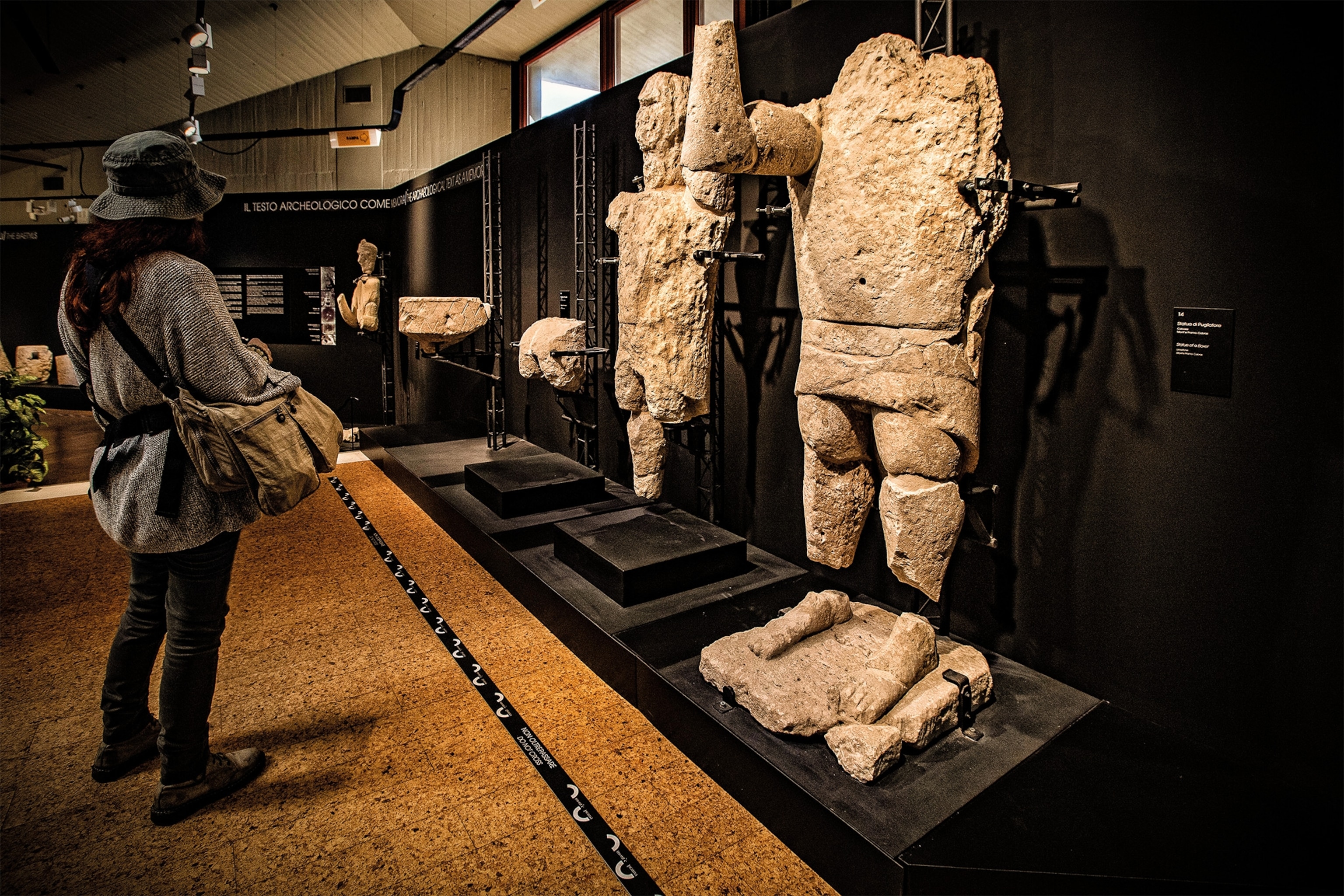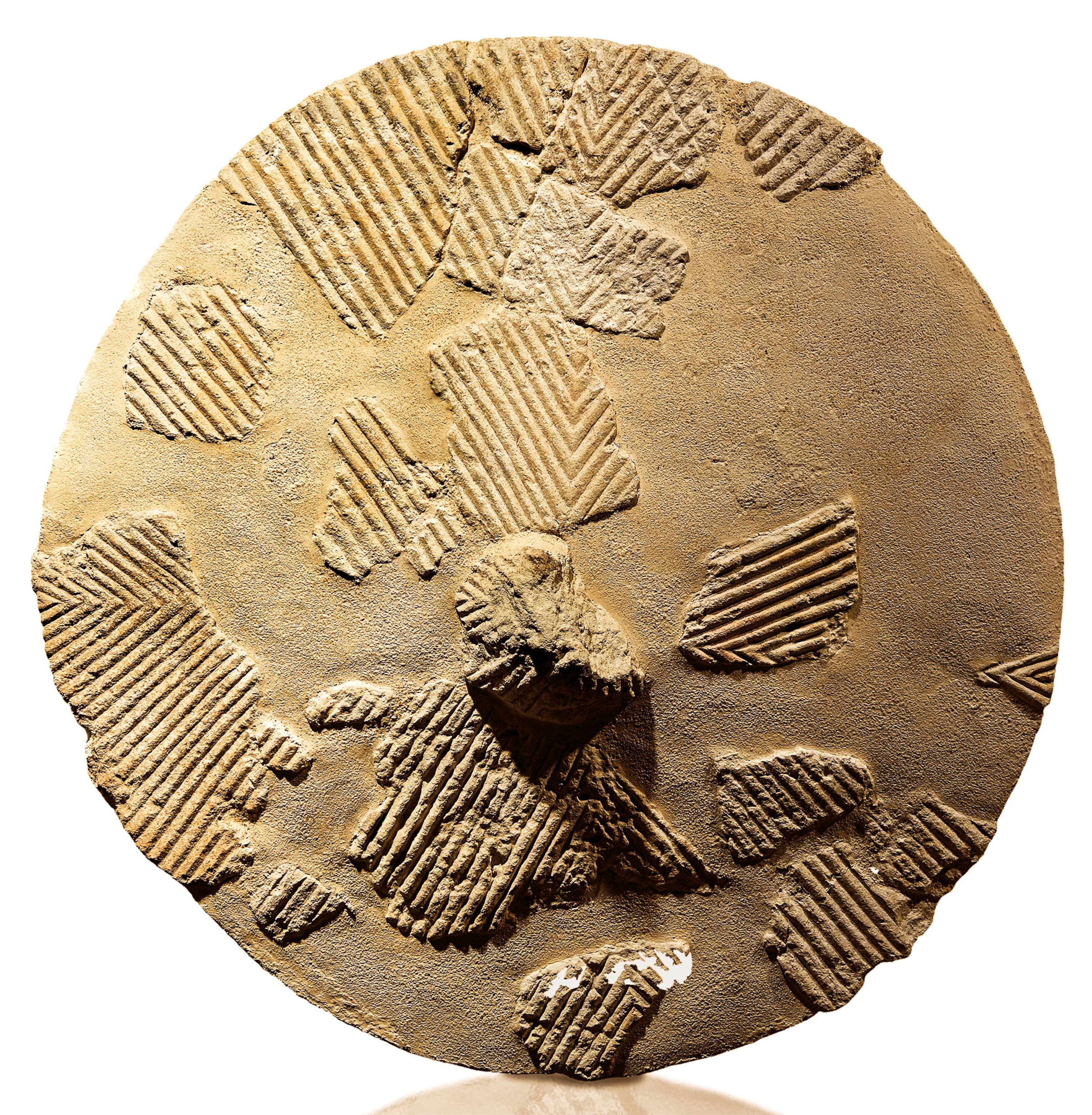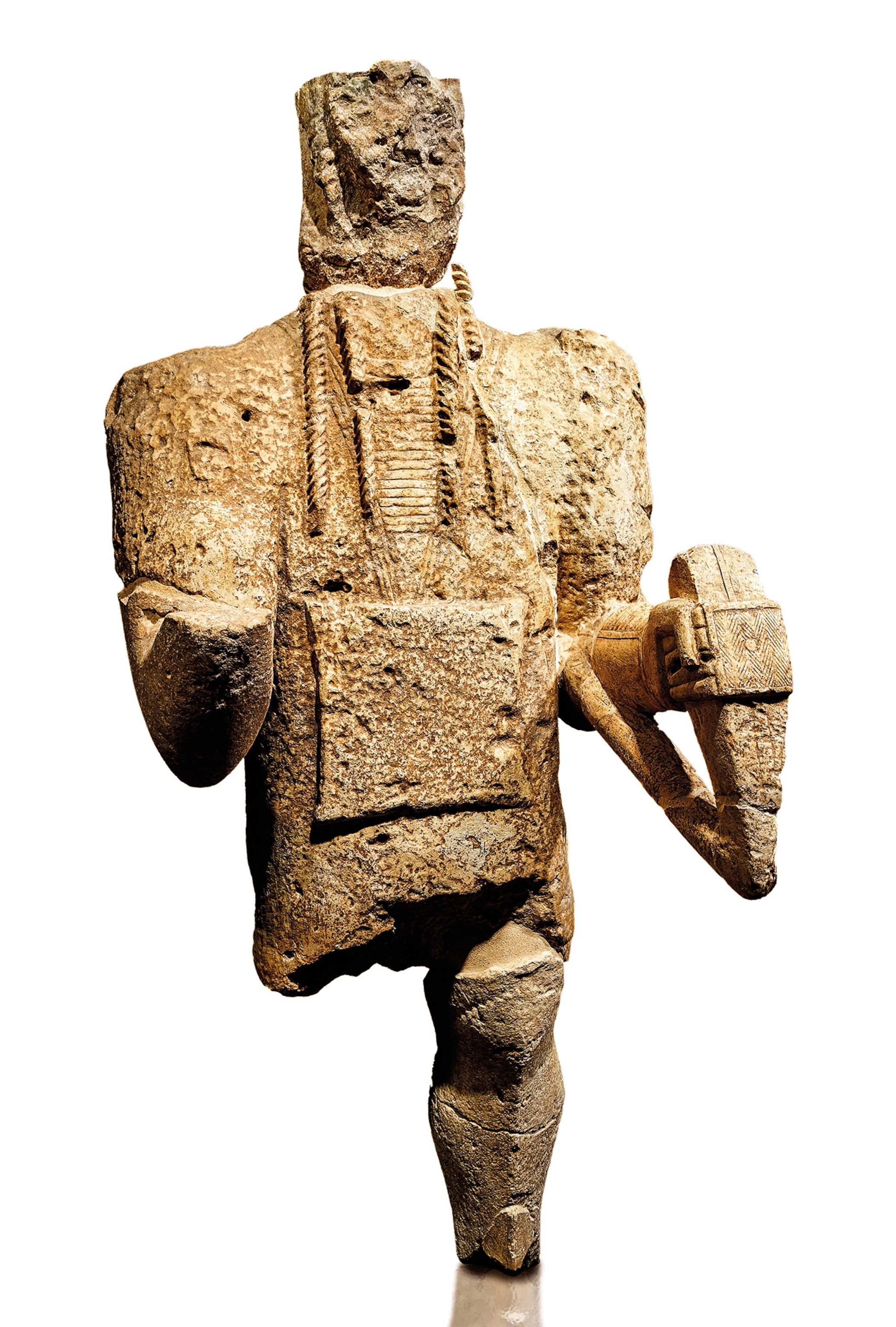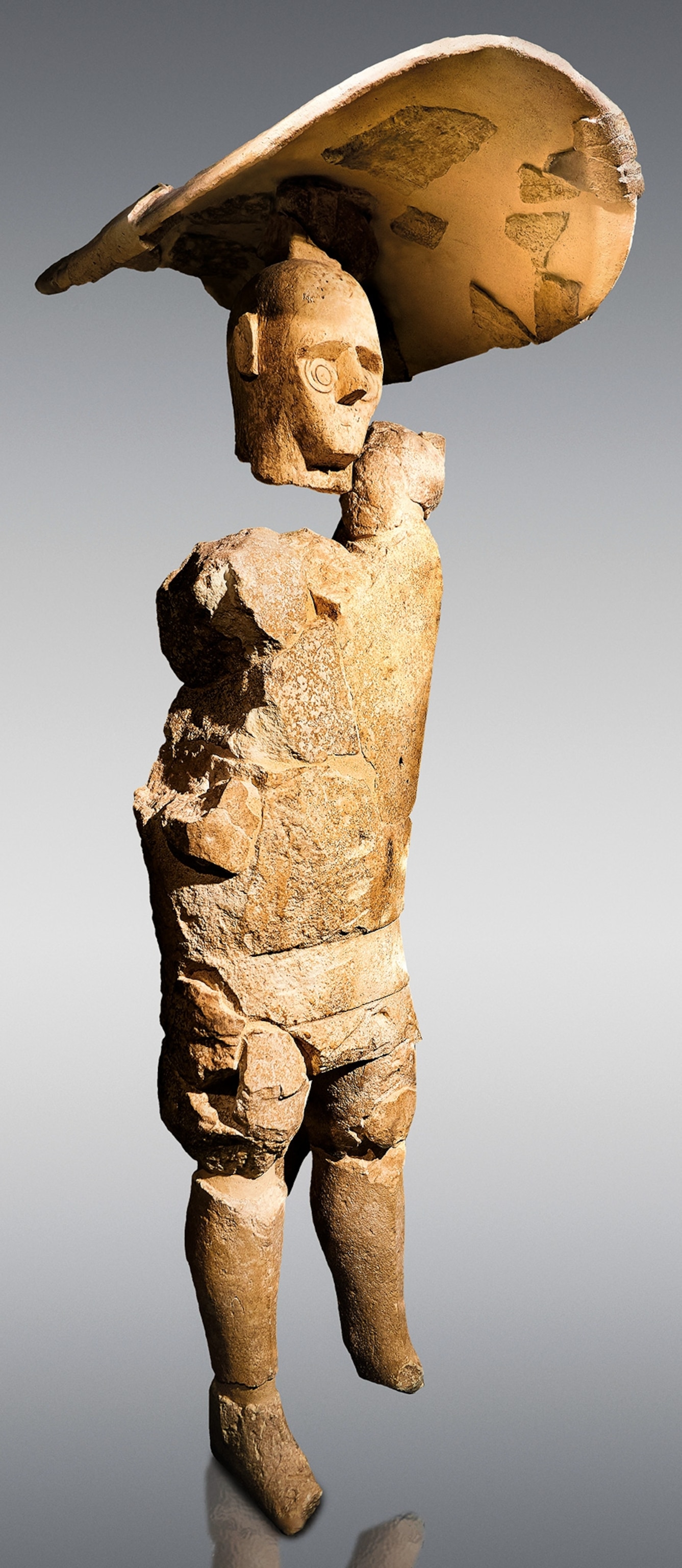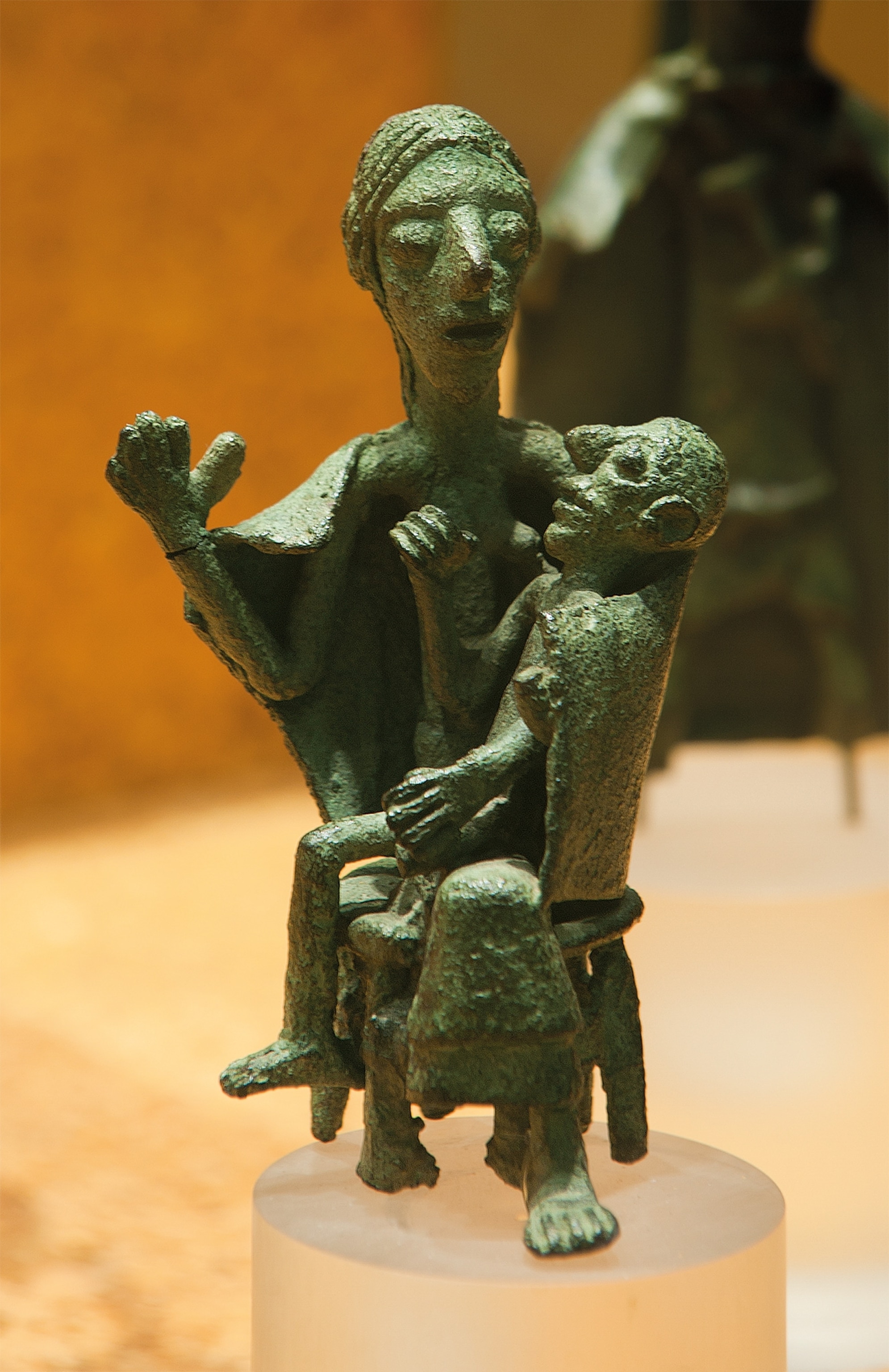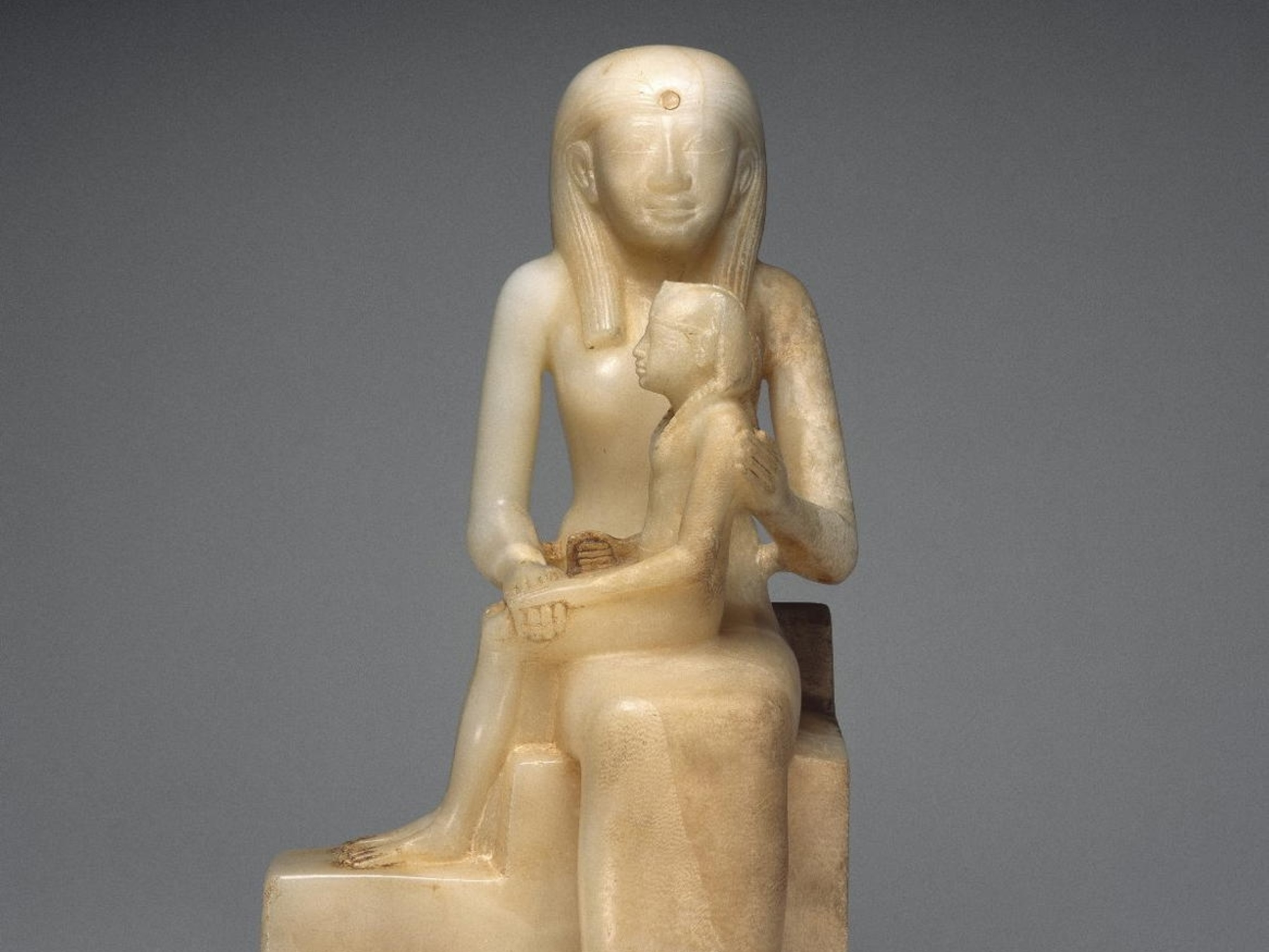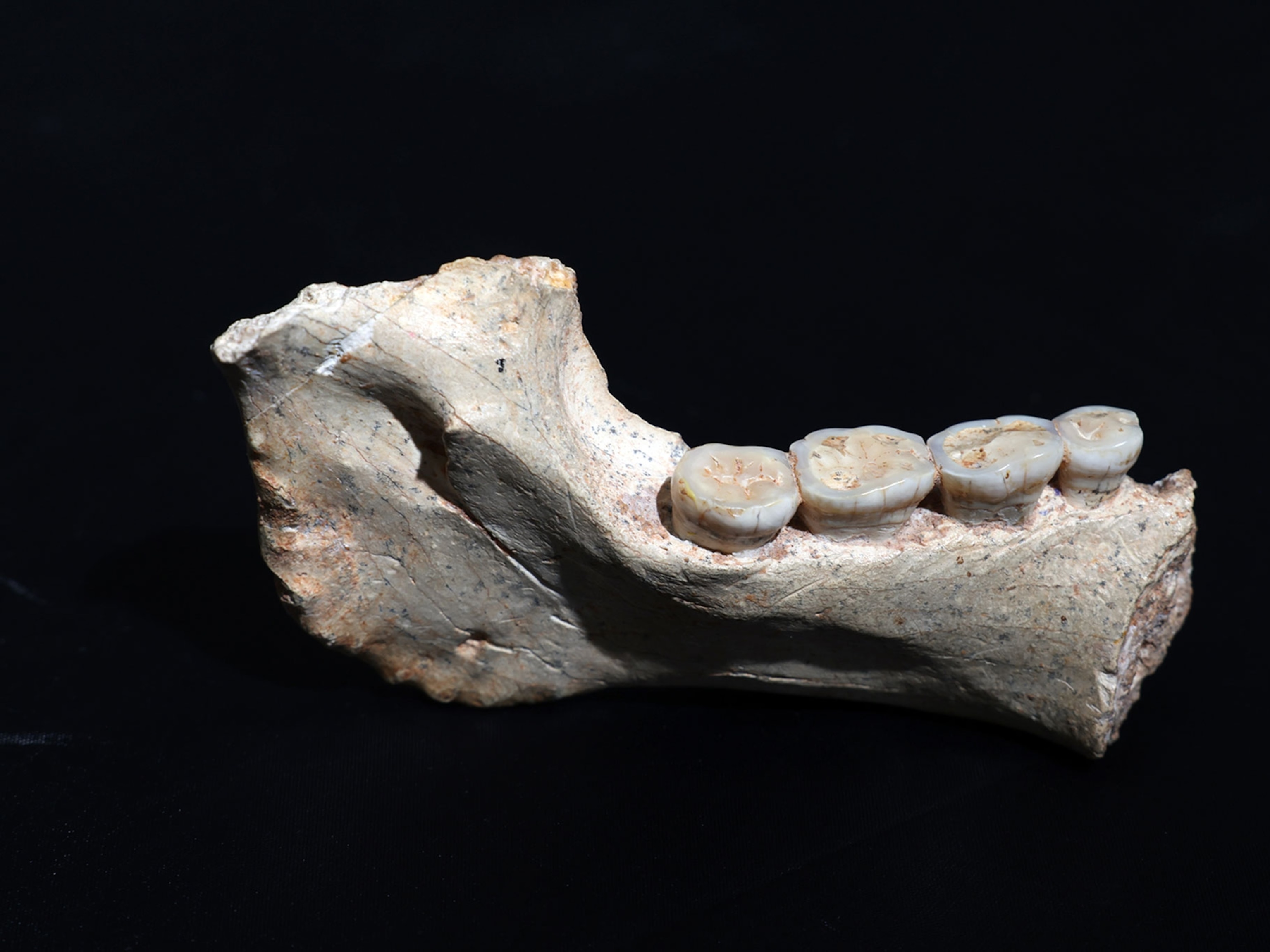These 3,000-year-old giants watched over the cemeteries of Sardinia
Crafted in the Iron Age, dozens of massive stone statues lay broken beneath a field in Mont'e Prama. Recovered and rebuilt, they are revealing insights into a lost Mediterranean culture.

Sardinian farmers plowing their fields in spring 1974 halted their work. They had struck what appeared to be a big rock, but closer examination revealed something far more intriguing: a stone head. Their discovery uncovered one of the most important Iron Age finds in the western Mediterranean.
The limestone block was unearthed at Mont’e Prama, on the island’s fertile western coast. It was the first of thousands of fragments to be harvested by archaeologists over the following decades. These pieces have since been reassembled into dozens of giant statues.
Originally carved from single blocks of limestone, the Mont’e Prama giants tower over most people. Some stand nearly seven feet tall. They have highly stylized features, such as triangular faces and T-shaped eyebrows and noses. Their most distinctive features are their eyes: These are represented by large, round concentric circles that stare straight ahead. Some statues hold shields, others hold bows. Based on these traits, scholars have grouped the Mont’e Prama statues into three main categories: archers, boxers, and warriors.
(Did Michelangelo fake this iconic ancient statue?)
Although historians are still puzzling over what the Mont’e Prama giants exactly represent, all agree they were intended to unite an ancient community through their powerful symbolism. They speak of a remarkable Iron Age culture that prospered nearly 3,000 years ago before succumbing to waves of invasions from outsiders.
Identifying artists
Now a part of Italy, Sardinia has a long and dynamic history of human settlement. Situated between the Italian and Iberian Peninsulas, it has long played an important role in Mediterranean trade.
When the Mont’e Prama stones were first discovered, scholars assumed they were part of a Carthaginian temple. The commercial power of Carthage was based in North Africa and conquered the island in the 500s B.C.
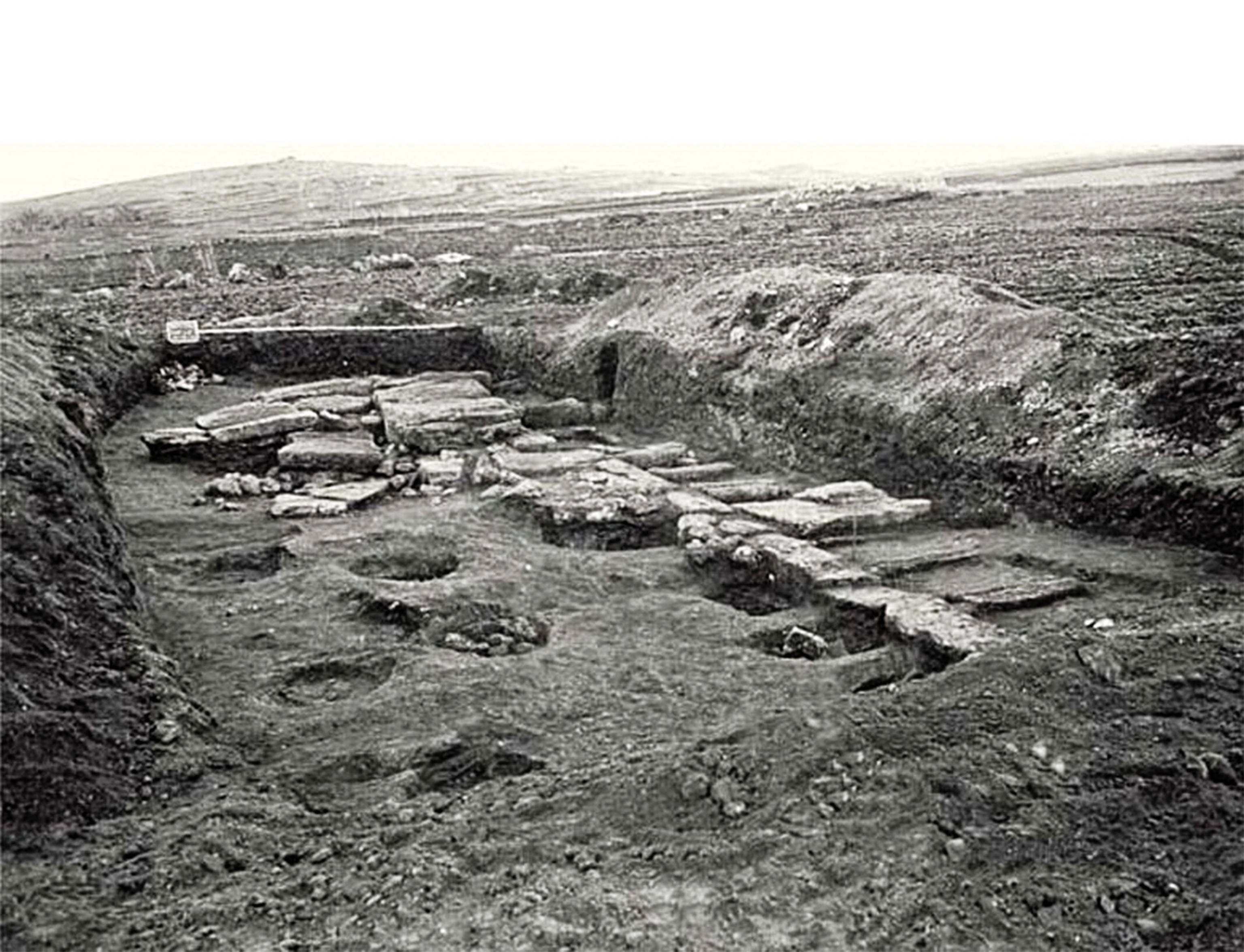
Following more detailed studies, however, researchers realized the stone fragments long predated the Carthaginians. After Giovanni Lilliu, regarded by many as the father of Sardinian archaeology, examined the fragments, he concluded that they shared traits with bronze statuettes made by Sardinia’s Nuragic civilization.
Flourishing between the 18th and eighth centuries B.C., the Nuragic culture is known for both metal- and stone-working. Across the island, the Nuragic people built distinctive megalithic structures, known as nuraghi (for which their culture is named). Today more than 6,000 listed nuraghi pepper the island’s landscape—an astonishing number for a territory that measures little more than 9,000 square miles (roughly the size of the state of New Hampshire in the United States).
Often dominated by a tower containing a circular chamber, these structures are found only in Sardinia. Their exact function is a mystery: Theories as to their use range from forts, dwellings, palaces, and even perhaps combinations of all three. New construction of nuraghi seems to have largely ceased around 1200 B.C., but the buildings remained in use for centuries.
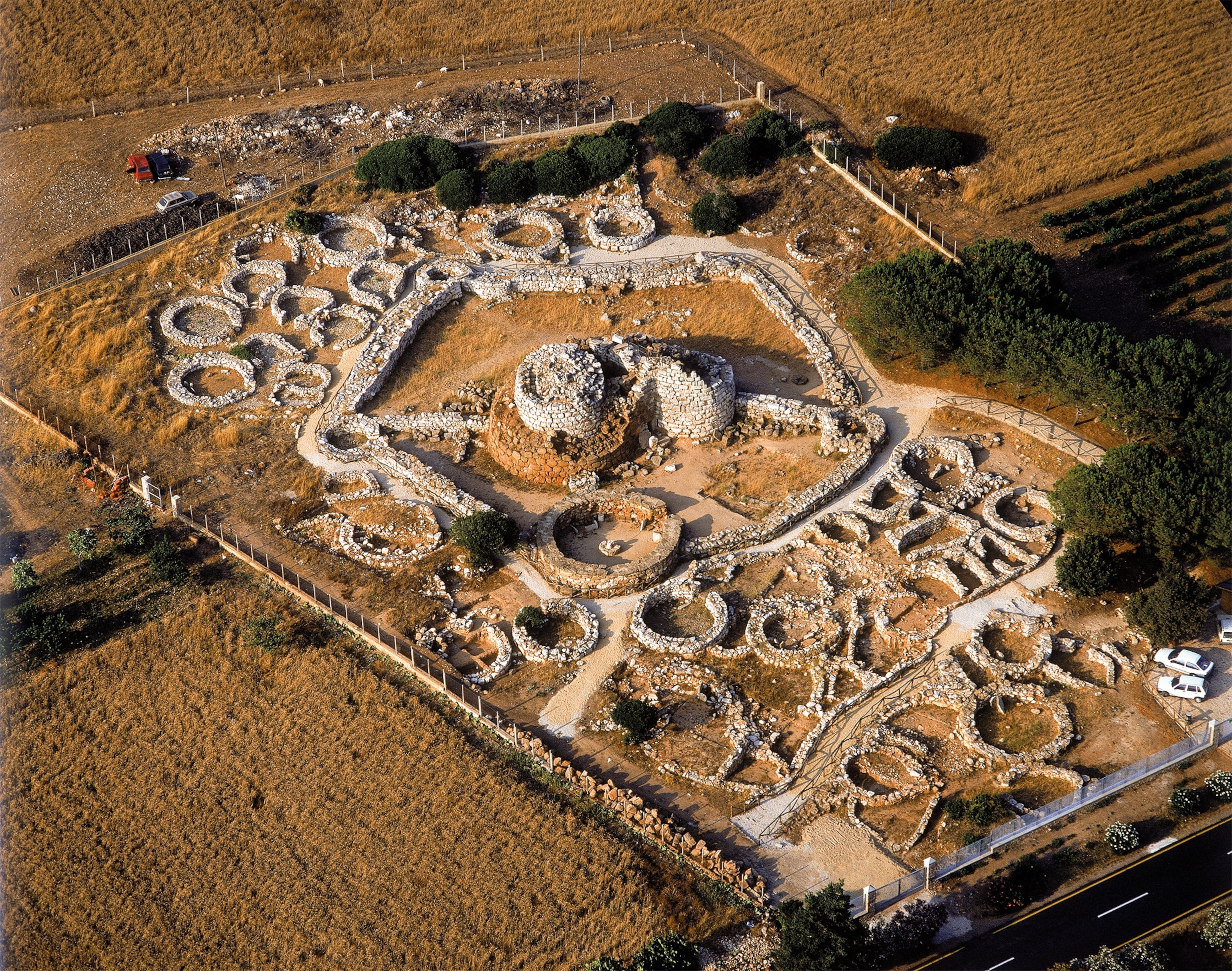
Some time after the creation of the giants, the Nuragic tribal system started to weaken and decline. Both the Greeks and Phoenicians sparred over the island’s rich mineral resources, the Phoenicians eventually gaining the upper hand. Later, their Carthaginian cousins from North Africa—Carthage had originally been founded by Phoenicians—conquered Sardinia sometime in the sixth century B.C.
At some stage after the Nuragic culture’s decline, the giants appear to have been destroyed. This was an apparently deliberate act of desecration. Scholars believe it was probably carried out by Phoenician or Carthaginian colonists in a bid to impose their new order on the island by visibly humbling the older one.
Mighty statues of Mont'e Prama
The massive Sardinian statues reassembled by archaeologists between 2007 and 2011 fall into three main categories: boxers, archers, and warriors. The statues have elements missing, but archaeologists believe that when they were intact, each sculpture displayed a full set of traits common in their categories.
The boxers, the most numerous category found to date, are bare-chested and thickset. Each figure held a shield over his head. Archaeologists have gleaned from fragments that they also once held a ritual combat glove in their right hand. The faces have two concentric circles for eyes. Historians theorize that these figures were the fighter-athletes, who may have played a religious, or even priestly, role.
The archers are represented with the right arm raised in a salute and the left hand, encased in a glove, holding a bow that rests on the shoulder. Long plaits of hair fall down. No well-preserved heads of archers have yet been found, so scholars believe they share the same facial features as the warriors. The few warriors that have been found so far are in poor condition. Their helmets bear a crest in the center and two horns on top. When they were first carved, they all likely carried circular shields.
A colossal task
Excavation campaigns throughout the 1970s confirmed that Mont’e Prama had been home to an ancient Nuragic necropolis. The earliest tombs date to the 11th century B.C. Excavations confirmed the site as unquestionably Nuragic, not only when more statue fragments were found but also when archaeologists uncovered miniature stone models of nuraghi.
When taken together, the finds from subsequent excavations at the Mont’e Prama site indicated that the stone giants were sculpted sometime between the 10th and eighth centuries B.C., toward the end of the peak of the Nuragic period in the Late Iron Age.
Much of the archaeological work at Mont’e Prama centered on the necropolis, its tombs, and the patient gathering and analyzing of vast numbers of fragments taken from the soil at the site. The task facing the team was appropriately colossal: Thousands of assorted fragments had been accumulating since the mid-1970s.
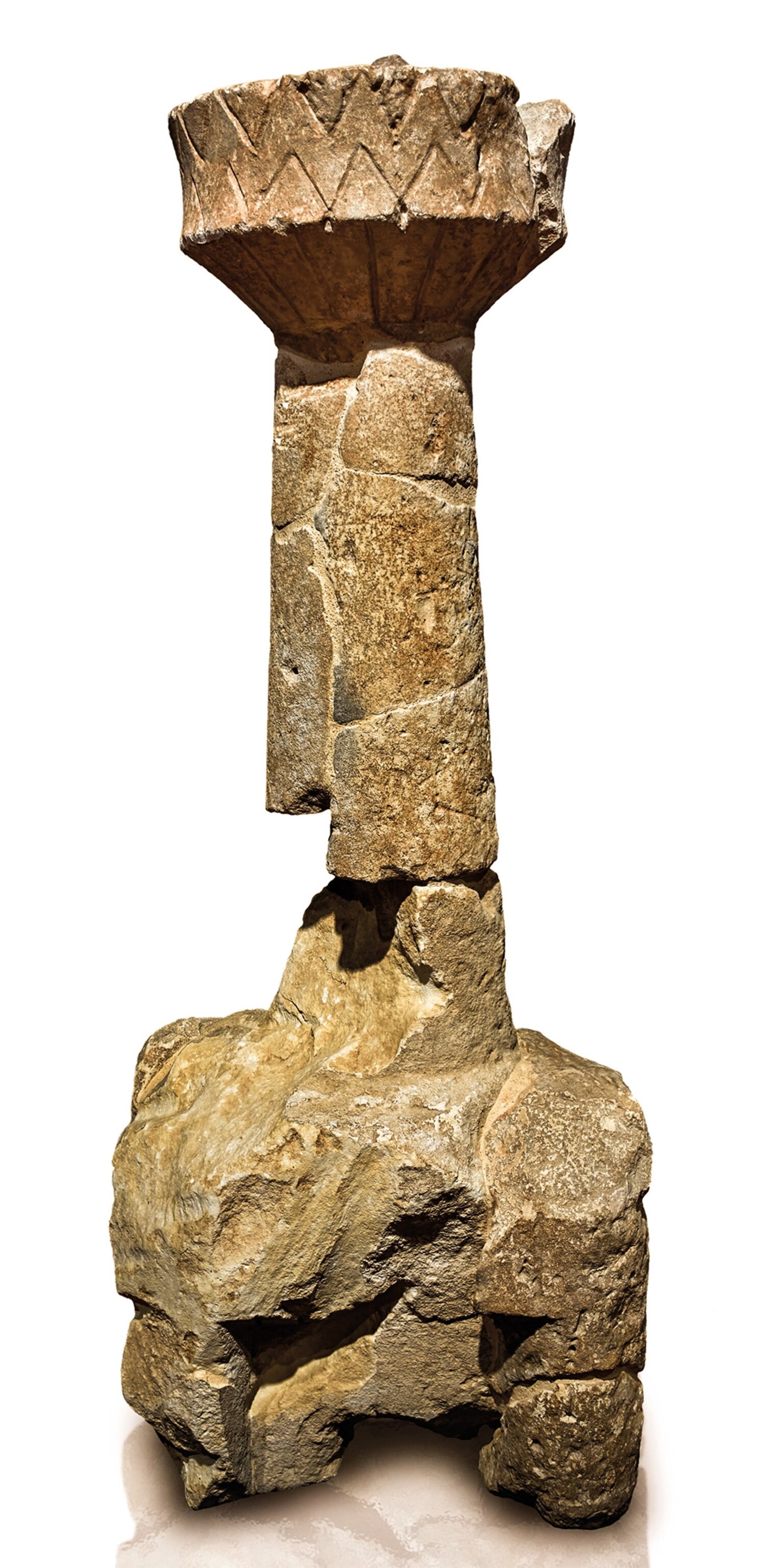
In 2007 the painstaking work of reassembling the stone figures would begin. By 2011 experts had managed to reassemble the stone pieces into 24 statues, many of which are incomplete. Today these Iron Age masterpieces can be seen at the National Archaeological Museum in Sardinia’s capital, Cagliari, and at the Giovanni Marongiu Civic Museum in Cabras, which lies near the site of Mont’e Prama.
In 2015 three more figures were restored, including two archers found at Mont’e Prama the year before. The style of these statues is markedly different from those found previously. In addition to the statues, the team has also been restoring numerous models of nuraghi.
Weighty questions
Why the Nuragic people erected these figures, and how they were arranged at the site still puzzles experts nearly 3,000 years later. Some argue that the figures stand for categories of the Nuragic military and priestly elite who are perhaps lying buried at the necropolis.
Another hypothesis is that the statues are meant to represent heroic figures from the Nuragic past—perhaps those who had built the massive nuraghi structures. According to this theory, the sculptures would have been arranged as a heroon, a Greek term meaning a temple or monument dedicated to a hero or heroes. Placed near the necropolis, these ancestor-heroes would have been a reminder of the traditional values and shared heritage that bound the island community together.
Putting them back together
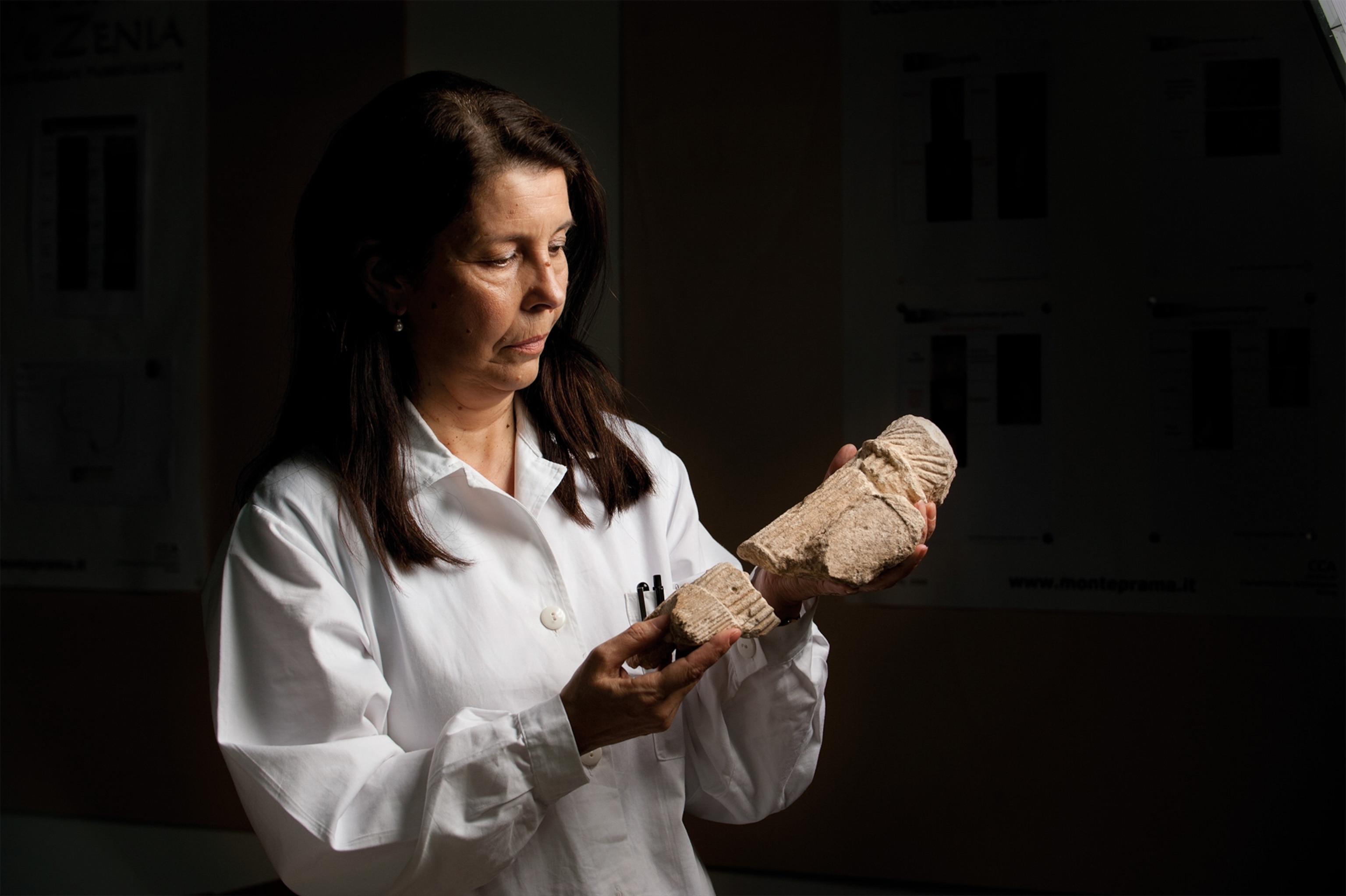
More than 5,000 fragments had been collected from the Mont’e Prama site since 1975. Putting them back together occurred at the restoration center of Li Punti in northern Sardinia. Between 2007 and 2011, researchers had to organize a stone jumble of broken arms, legs, torsos, heads, and shields. After examining each surface for the type of tools and techniques applied by the Iron Age sculptors, they carefully cleaned and then sort- ed each fragment. When they had finished, they had assembled 24 statues in as complete a state as possible. Because of the statues’ age and some crucial missing pieces, the team used metal supports to display the giants upright. In their prime, these statues were created with such skill that historians believe they stood without any supports at all.
Even today, Sardinians strongly identify with such symbols of their ancient past. The faces of the giants of Mont’e Prama have become so well-known and celebrated that, for many, they have come to replace the nuraghi buildings themselves as the symbol of the island’s ancient past.



